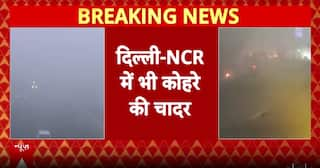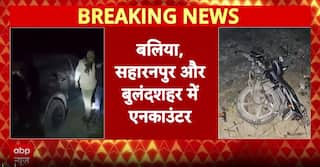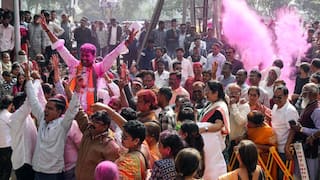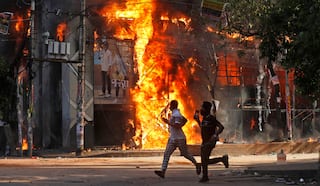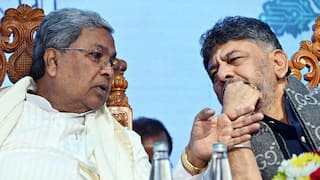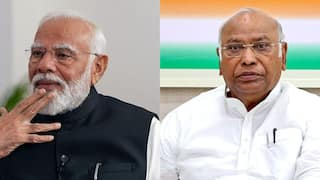Explorer
A Country In Search Of Itself: Reflections On The Occasion Of India’s Independence Day
There can be no doubt that India waged a struggle for freedom that is unique in the annals of world history. The reason for this is all too obvious: the principal architect of the Indian struggle was Mohandas Gandhi, who also introduced a way of being in the world that can scarcely be comprehended by those who have merely sought to reduce nonviolence to a “technique”.

A customer buying the national flag at a roadside stall on the eve of the country's 74th Independence Day. (Image: AFP)
As India marks the 73rd anniversary of its independence, it is once again an opportune moment to reflect on what remains of the legacy of the anti-colonial struggle that led to India’s deliverance from colonial rule. The country might seem to have weightier subjects on its mind: the coronavirus continues to cut a blazing trail through much of the country, and whatever actions the state has taken to stem the transmission of the disease have evidently been woefully inadequate. Tens of millions of people have been thrown into the ranks of the unemployed. Many people have been cheered, and some startled and dismayed, by the bhoomi pujan conducted by the country’s Prime Minister, who in principle is supposed to represent every citizen without distinction, at Ayodhya in consequence of the 2019 Supreme Court decision that left the path open to Hindu nationalists to raise a grand temple in honor of Rama at his alleged birth place. That such a ceremony, which seems to be not only about building a temple to augment Hindu pride but coronating a king, should have taken place at a time when the pandemic is exacting an immense toll says something about the priorities of the present regime.
Though historians in the West have generally written the history of the twentieth century as one marked by world conflict in the first half, and the “Cold War” in the second half, an altogether different assessment becomes possible if we understand the four decades following the end of World War II as one characterized preeminently by decolonization. One country after another, commencing with India and Indonesia, and ending with the liberation struggles in Africa, rid themselves of the yoke of their colonial oppressors. Nevertheless, there can be no doubt that India waged a struggle for freedom that is unique in the annals of world history. The reason for this is all too obvious: the principal architect of the Indian struggle was Mohandas Gandhi who, much as he was the theorist and practitioner of the idea of mass nonviolent resistance, also introduced a way of being in the world that can scarcely be comprehended by those who have merely sought to reduce nonviolence to a “technique”. He set a bar for ethical action in politics which is unlikely to be ever met in the future and certainly is well beyond the comprehension of the present breed of Indian politicians.
Some have traced the antecedents of the “freedom struggle” as it is called in India to the Rebellion of 1857-58, which Vinayak Savarkar characterized as the First War of Indian Independence. Whatever the merits of that view, the conventional histories of nationalism trace its beginnings to the founding of the Indian National Congress in 1885. On a side note, the Congress became a model not only to Gandhi when he set up the Natal Indian Congress, but to anti-colonial struggles in much of Africa: we should think, for example, of the African National Congress, founded in 1912, and the East African Indian National Congress which came into being in 1914. When Gandhi returned to India in January 1915 after a stay of over 20 years in South Africa, he did not return to a country that had a political vacuum. Leaders such as Bal Gangadhar Tilak & Gopal Krishna Gokhale in present-day Maharashtra, Bipan Chandra Pal & C. R. Das in Bengal, and Lajpat Rai in the Punjab had considerable followings.
What truly astonishes is the ascendancy of Gandhi in a short period of four years to the helm of Indian politics. His contemporary, the fiery socialist and feminist Kamaladevi Chattopadhyay, who differed from Gandhi but nevertheless still revered him, was entirely correct when she argued that with his entry into the political scene everything that had preceded him passed into oblivion. Many would not have shared her assessment then; their numbers have since grown in India, with the assaults on Gandhi coming from every direction. There were, needless to say, other strands to the anti-colonial struggle. The Ghadr Movement, which has become particularly attractive to those who stress its transnational linkages, certainly troubled the British though in India it was short-lived and achieved little. By far the greater attention has been lavished upon Bhagat Singh, the most illustrious figure associated the Hindustan Socialist Republican Army (HSRA), and the armed revolutionary activity that in the 1920s created quite a splash. In Bengal, Subhas Chandra Bose remains the perennial favorite, but it would be an extraordinary stretch to argue that the Indian National Army (INA) that he forged had more than an ancillary role to play in the achievement of independence.
Whatever the place of these other political trajectories in the narrative of Indian nationalism, Gandhi’s achievements were not merely greater by orders of magnitude but belong to a different realm of history. If one is to consider the legacy of the freedom struggle, and why it is that India was able to strike a different path in the period following independence as well, it is to Gandhi and the Congress party that we must turn. India is quite distinct among the countries that waged anti-colonial struggles in that it largely retained the structures and spirit of democratic life. In neighboring Pakistan, attempts to bring down the democratically elected government commenced in 1951, and the military coup of 1958 led to a prolonged period of martial law extending to 1971. Pakistan experienced other long bouts—1977-88 and 1999-2008—of living under martial law. Further afield, in Indonesia, the purges of communists in 1965-66, carried out with the explicit encouragement and aid of the Americans, may have led to the death of as many as a million people at the hands of the army and death squads. A yet more convoluted bloodbath eventually convulsed Algeria, the outcome in many respects of the brutal war of liberation fought by the FLN (National Liberation Front) from 1954-62.
One might object to such a characterization of India by pointing out that Mrs. Indira Gandhi, as Prime Minister, imposed an emergency in 1975 and suspended all constitutional liberties. But it is a telling fact, though one that does not redeem her shortcomings, that it is of her own volition that she called for elections in early 1977 and accepted the people’s verdict that drove her and the Congress party out of office. The mass campaign of resistance to her increasingly autocratic rule led by the veteran Gandhian, Jayaprakash Narayan (or JP, as he was known), had fueled her desperation; nor should it be forgotten that it was a judgment of the Allahabad High Court which unseated her in June 1975 that threw her into a panic and led her to put the country under an emergency. Indeed, we might say that for many decades after independence, this separation of powers characterized the Indian political system and the higher courts were reasonably robust in maintaining their independence. India also displayed another feature of a democracy seldom found in most of the other countries that liberated themselves from colonial rule, in that the exclusion of the military from politics and civic affairs was scrupulously observed.
It was Gandhi’s deep suspicion of the state, and his frequently expressed argument that political independence was scarcely worth anything unless the people were able to gain economic, social, and cultural rights, that informed the JP movement as well as numerous other popular initiatives, such as the Chipko Andolan and SEWA (Self-Employed Women’s Association) that sought to draw attention to ecological degradation, the desirability of sustaining economic autonomy for women, and strengthening the role of ordinary people in a democracy. However, even if Gandhi towered over everyone in his lifetime, the struggle threw up an entire galaxy of altogether remarkable figures—including Maulana Azad, Patel, Nehru, Kamaladevi, Sarojini Naidu, and Rajagopalachari, to name but a few who lived to see the advent of independence—and it is equally the spirit that they embodied which would come to be reflected in the Constitution of India crafted by Ambedkar and members of the Constituent Assembly.
The Preamble to the Constitution described India as a “sovereign democratic republic”, and it is only 25 years later, during the Emergency, that the wording was changed through the 42nd Amendment to the Constitution and India was rendered a “sovereign socialist secular democratic republic”. It is instructive that the framers of the Constitution felt confident enough in India as a multi-ethnic, multi-religious, and multi-lingual civilization that they did not have to insert “secular” into the Preamble. Though “secularism” to the framers did not mean what it meant in the West, a mechanical separation of ‘church’ from ‘state’, the framers of the Constitution, working we might say in the spirit that Gandhi had established, looked both to India’s syncretic past and to everyday practices of inter-communality to shape their view of a secular state. That Mrs. Gandhi had to explicitly aver the “secular” nature of India in 1976 suggests that the rot had already set in. The assassination of Mohandas Gandhi on 30 January 1948, a mere six months after the attainment of independence, in retrospect indicates that something was already askance: it was, after all, in (Robert Payne’s phrase) a “permissive assassination”, one deeply desired by some among Hindu nationalists who did not merely see Gandhi as a traitor, as the “Father of Pakistan”, but as someone whose critique of modern industrial civilization could not be tolerated if India was to emerge as a strong and muscular nation-state. During the time of Mrs. Gandhi, and through to the end of the 1980s, this rot—the turn to communalism and the gradual abandonment of Indian ideals of ecumenism—deepened.
Very little if anything remains in India today of the legacy bequeathed by Gandhi, Nehru, the stalwarts of the freedom struggle, and the framers of the Constitution. The independence of the judiciary has been seriously compromised over the last several years; indeed, as I write these lines, the Supreme Court has diminished its own importance and stature by finding one of the country’s most eminent lawyers, Prashant Bhushan, in contempt of court—merely for daring to criticize the court and questioning whether it has retained its autonomy. The fact of the matter is that such “contempt of court” cases are no longer entertained in mature democracies. Perhaps it is no coincidence that Bhushan has also been vocal in his critique of the lawlessness that prevails on the streets in India. On the question of secularism, it cannot be emphasized enough that the ideal in India was never the textbook version of secularism that has come down to the West from the philosophers of the Enlightenment and the French Revolution. Gandhi derived his secularism from being a devout Hindu, just as Maulana Azad derived it from being a devout Muslim. But the acceptance of secularism by India’s constitution framers did entail some principles that to a very substantial degree were observed by the Indian democratic republic for at least the first two to three decades. Among them were the ideas, put quite plainly, that the state was not to give preference to any one religion over another, and that adherents of every faith could practice their faith without obstruction or prejudice.
The Prime Minister has just made another grandiose speech from the ramparts of the Red Fort. That is his job. The country has practically been handed over to Hindu nationalists, the lumpen among whom have been charged with brow-beating everyone into submission. The question now is not simply whether those in power serve only their Hindu constituents, contrary to the oath each has taken to uphold the Constitution of India. The problem for India is a much deeper one that will not be resolved even if, though the prospect of such an outcome is negligible at this time, the next election should bring the Congress or a coalition of anti-BJP parties into power. There is what may be called a “Hindu rage” that has blanketed the country: it is to be seen there in the viciousness with which the trolls and street gangs working on behalf of Hindu nationalists put down all dissent, the disdain and suspicion for the Muslim that has crept into everyday life, the turn to history to revive memories of Hindu leaders, and the determination to take back the country from foreigners and Make Hindu India Great Again. This “Hindu rage” is likely to persist for the foreseeable future.
Many schools of wisdom have argued that to find ourselves we first have to lose ourselves. I would say that oddly Indians, and especially Hindus among them, are in search of a country that they can call their own. They who have had a wondrous home, who have been housed in a civilization that embarrasses with its riches—and, to some, repels with its shortcomings and injustices—think they don’t have a home at all. In a twist on the common wisdom, it appears that sadly most Indians will first have to find themselves before they can lose themselves. Then might the promise of independence be redeemed.
(Vinay Lal is a writer, blogger, cultural critic, and Professor of History at UCLA)
Disclaimer: The opinions, beliefs and views expressed by the various authors and forum participants on this website are personal and do not reflect the opinions, beliefs and views of ABP News Network Pvt Ltd.
Follow Blog News on ABP Live for more latest stories and trending topics. Watch breaking news and top headlines online on ABP News LIVE TV
View More










